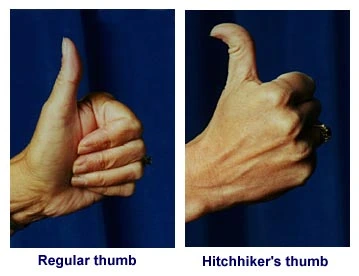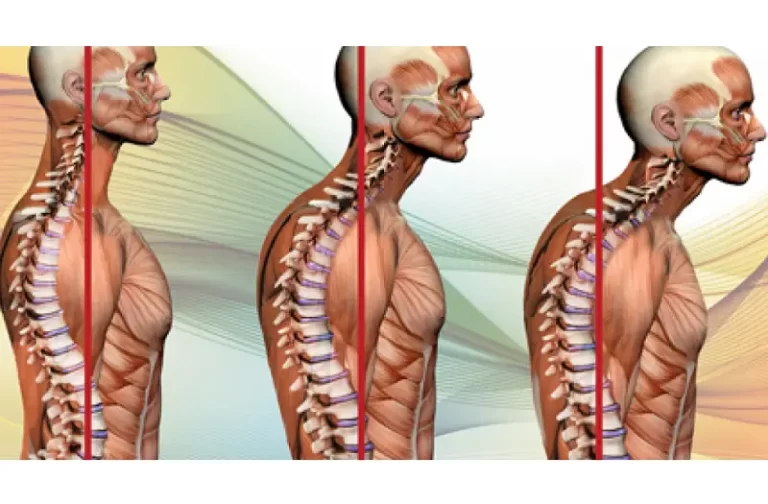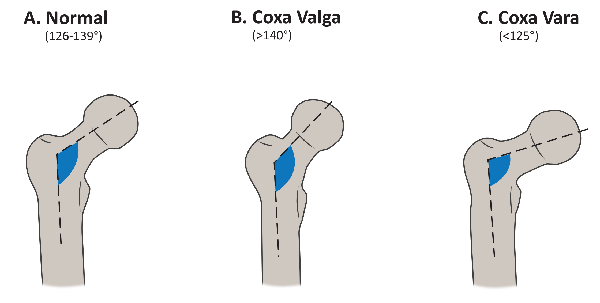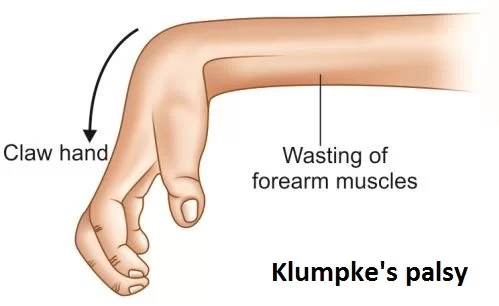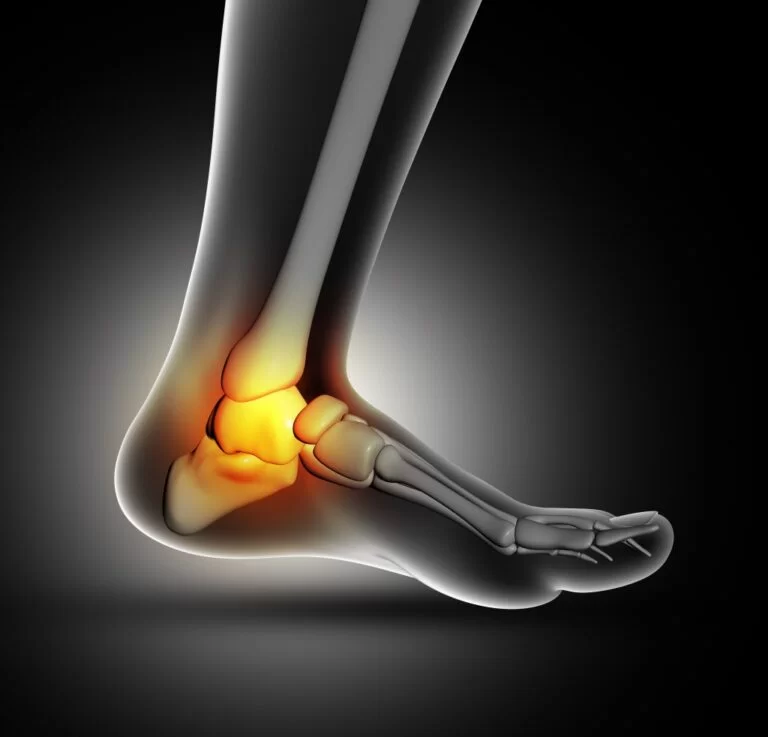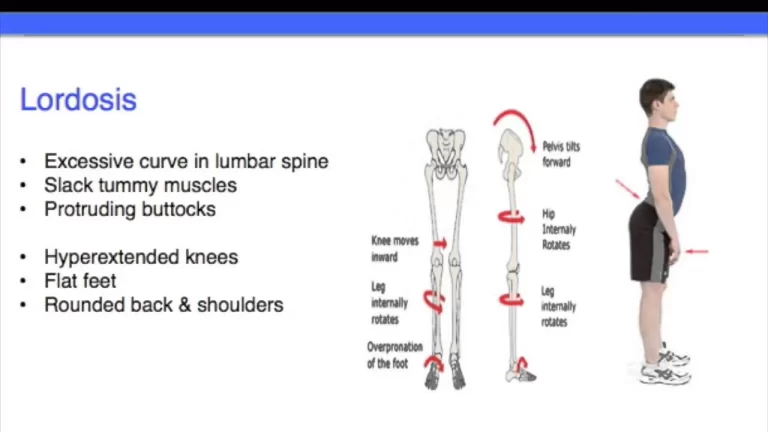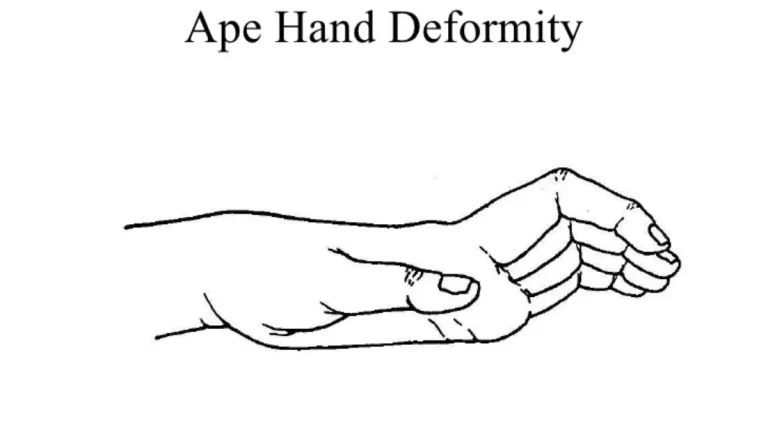Hitchhiker’s Thumb Deformity
What is Hitchhiker’s Thumb Deformity?
- A thumb that is hypermobile, extremely flexible, and capable of bending backward beyond its typical range of motion is known as a hitchhiker’s thumb. Formally referred to as distal hyperextensibility, this disorder has no discomfort and does not affect entirely thumb function.
- The distal interphalangeal joint, which connects the thumb’s bones, is what determines how flexible your thumb is.
- Distal joints in those who have hitchhiker’s thumb can bend back up to ninety degrees. This looks like a classic roadside hitchhiker trying to hitch a ride with their thumb out.
- One or both thumbs may develop a hitchhiker’s thumb.
Causes of Hitchhiker’s Thumb Deformity
- The hitchhiker’s thumb might have a hereditary connection.
- The gene that controls thumb straightness may have two recessive copies, or alleles, in certain individuals with hitchhiker’s thumb. This indicates that the individual born with a hitchhiker’s thumb had the feature in both parents.
- Instead, their kids wouldn’t have hitchhiker’s thumb if one parent carried the recessive gene for the disorder and the dominant gene for thumb straightness. Individuals with the recessive gene for this disease are carriers.
- For a kid of a recessive gene carrier to inherit the characteristic, the parent carrying the gene would need to have another carrier in their family.
- However, there is significant disagreement over whether thumbs are always straight or hitchhiker. An alternate explanation is that thumb bendability is a spectrum that goes from the joint’s total lack of bendability to its maximum bendability.
Symptoms of Hitchhiker’s Thumb Deformity
- Joint and muscle pain and stiffness
- Frequent joint and ligament injuries
- Including dislocations and sprains
- Thin, stretchy skin.
- Short stature
- Very short arms and legs
- Joint pain and deformities (contractures)
- Underdeveloped bones
- Dislocated joints
- Wide hands and feet
- Broad fingers and toes
Complications and conditions associated with Hitchhiker’s Thumb Deformity
- There are no issues or health risks associated with the hitchhiker’s thumb. It doesn’t normally hurt and doesn’t make using your hands more difficult.
- Hitchhiker’s thumb has been linked to several illnesses. Among them are:
Diastrophic dysplasia:
- This is a hereditary disorder that impacts cartilage and bone growth. The limbs and legs of those who have this syndrome are very short. In addition, they could have crooked spines, club feet, and hitchhiker’s thumbs.
Hypermobility spectrum disorder:
- Joint hypermobility spectrum condition is a connective tissue illness that causes excessively flexible joints in several body parts, perhaps including the thumbs.
- Because of their ability to move their joints beyond the usual range of motion, people with this disease are sometimes referred to as “double-jointed.”
Atelosteogenesis type 2:
- An uncommon genetic condition that impacts the growth of cartilage and bones. Despite being more severe, it is similar to dystrophic dysplasia.
Atelosteogenesis type 3:
- It is an uncommon genetic condition that affects how your body develops bones throughout.
Summary:
- A thumb that is hypermobile, extremely flexible, and capable of bending backward beyond its typical range of motion is known as a hitchhiker’s thumb. Formally referred to as distal hyperextensibility, this disorder has no discomfort and does not affect entirely thumb function.
- The distal interphalangeal joint, which connects the thumb’s bones, is what determines how flexible your thumb is.
- Distal joints in those who have hitchhiker’s thumb can bend back up to ninety degrees. This looks like a classic roadside hitchhiker trying to hitch a ride with their thumb out.
FAQ:
Is the thumb of a hitchhiker good or bad?
The thumb can bend backward to form the hitchhiker’s thumb when the distal joint hyperextends. The thumb of a hitchhiker is not a benefit or a drawback. This kind of bending does not hurt the thumb or impair its ability to operate.
What differentiates a hitchhiker’s thumb from a straight thumb?
Thumb Shape Personality Test: A thumb that does not bend back past the first knuckle is considered straight. The most typical kind of thumb is this one. Thumbs that may bend backward past the first knuckle are referred to as curved thumbs or hitchhiker’s thumbs.
What is the cause of the hitchhiker’s thumb?
There may be a hereditary component to the hitchhiker’s thumb. The gene that controls thumb straightness may have two recessive copies, or alleles, in certain individuals with hitchhiker’s thumb. This indicates that the individual born with a hitchhiker’s thumb had the feature in both parents.
What kind of person does a curved thumb have?
People who have a bent thumb are typically very expressive and emotional. They have little trouble adjusting to new circumstances and are quick to sympathize with others. Occasionally, though, individuals run into circumstances that are too difficult for them to handle, which causes emotional anguish.
What does a long thumb mean?
A thumb that is broad and lengthy without a curve, on the other hand, denotes determination. Nonetheless, these individuals frequently exhibit leadership traits as well. In addition to the thumb, your foot’s big toe also reveals something about your personality.

